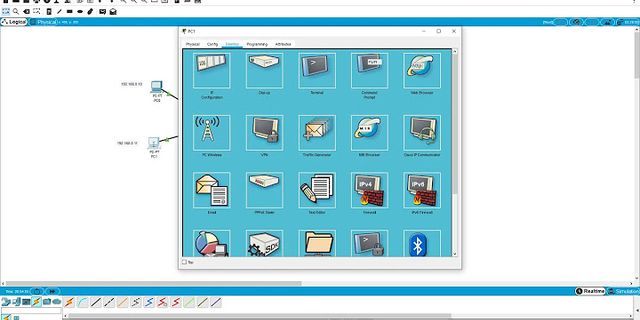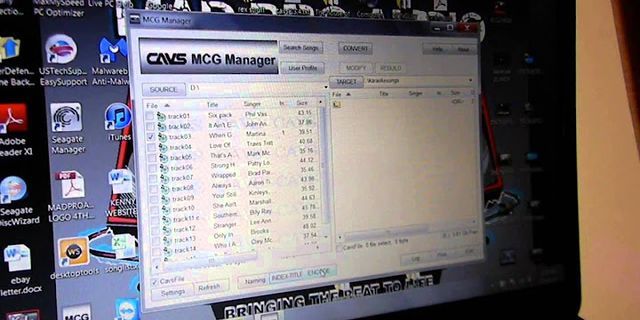I’d like to know if it is okay to use a different power charger for my netbook. Originally, the charger specs are 19v and 1.58A. This charger is not available anymore and I can only find a 19v and 2.15A. Can I use this as a replacement? Yes — with a couple of caveats, of course. If it’s not made specifically for your particular computer, getting the right power supply is important and involves matching voltage, amperage, and polarity. Each has different constraints. VoltageThe voltage provided by your charger must match that expected by the device being charged. When replacing a charger, this is easy to determine: it’ll be listed on the old charger. In your case, the old charger supplied 19 volts, so your replacement must also be 19 volts. It’s very important to get the right voltage. Some devices are tolerant of variations and work just fine. Others, unfortunately, do not. Depending on how different the supplied voltage is from what’s required, the device may simply fail, it may work “kind of”, or it may appear to work at the cost of a much shorter lifespan. If the voltage is off by enough, it can damage your device. And here’s the problem: there’s no way to say what’s enough or too much. It varies from device to device. Some may tolerate a wide range of input voltages, while others are extremely sensitive to even the smallest error. Sidestep all those unknowns and make sure to get exactly the right voltage from the start. Amperage
The amperage provided by your charger must match or exceed what the device being charged requires. The amperage rating of a charger or power supply is the maximum it can supply. A device being charged will only take as much amperage as it requires. If your device needs 0.5 amps to charge, and your charger is rated at 1.0 amps, only 0.5 amps will be used. The problem, of course, is the reverse: if your device needs 1.0 amps, but your charger is rated at only 0.5 amps, then any of several problems could result:
Thus, as long as you replace your power supply with one capable of providing as much or more amps than the previous, you’ll be fine. To be clear: there is nothing wrong at all with having a charger capable of providing more amps than needed. PolarityThe polarity of the connection between your charger and device must be correct. Most power supplies provide their output on two wires: one labeled (+) or positive, and the other (-) or negative. Which wire is which is referred to as polarity. Polarity must match. Here’s the catch: just because the physical plug fits into your device does not mean that the polarity is correct.  Particularly when it comes to popular circular power connectors, make sure the expectations match. If the device expects the center connector to be positive and the outer ring to be negative, your power supply’s connector must match. There’s no getting around this. Failure to get it right at best just doesn’t work, but at worst can damage the device. Look carefully for indicators on both the power supply and the device. The good news here is that there are some standards where the polarity is always correct. USB power supplies, for example, are the same no matter what. Input voltageInput voltage — aka “mains” or line-voltage — is, of course, critical. Plug a device expecting 110 volts into a 220-volt socket, and you’ll probably see sparks followed by darkness as the circuit breaker trips. You’re also likely to damage the device. Most of the time. When it comes to modern power supplies, however, almost anything works. If you look closely at the small print on many power supplies, you’ll see they’re rated for anything from 100 to 250 volts. This means most can work worldwide with nothing more than an adapter to account for the physical plug differences — no voltage transformer needed. Check your power supplies before you travel, of course, but it’s very, very convenient. Important: the input voltage and amperage ratings are unrelated to the charger’s compatibility with your device. What matters for your device are the output voltage and amperage ratings.
At first glance, USB-C looks as if it's going to simplify things: one port that you can plug anything into, because USB-C can support anything from normal USB power and data connections to MHL, DisplayPort and Thunderbolt video connections to laptop power (up to 100W). The problem is that while USB-C can support any and all of those, what actually works is down to the capabilities of the port and of the cable itself (more specifically, the control chips at either end of the cable). Some laptops have one USB-C port that supports the PD (Power Delivery) standard and one that doesn't, because that way you can use a cheaper controller chip and only have to route the power down one path on the motherboard. Different protocols have different licencing requirements, so not every cable supports Thunderbolt. And you need specific controller chips in the cable to support PD. SEE: IT pro's guide to the evolution and impact of 5G technology (free PDF) That's why the UNO interchangeable cable we looked at recently didn't support PD, making it an almost, but not quite, universal cable. The £46/$55 Infinity Cable (also from Chargeasap) has some nice tweaks: a cord wrap; a smaller, less bright LED on the cable so you know when power is flowing but you don't get dazzled by your phone cable at night; and the 15-year warranty that presumably inspired the name. But the big change is that it supports PD up to 100W. The Infinity cable has USB-C on one end, with an optional ($5) USB-A adapter for when you need to use an older port; the other end is a magnet with interchangeable connectors for USB-C, Micro-USB and Lightning. The magnets are strong -- get the tip close to the cable and it snaps on securely, but if you yank on the cable the tip will come off before you pull your device off the table. That leaves the tip in your device, so the little black tool for prising it out will come in handy unless you have strong nails. If you really like the cable, it's worth getting a few spare tips so you can use it with several devices without having to get the tip out each time. That's all very like the UNO; the difference is the promise of being able to charge a laptop as well as a phone or a fitness tracker.  Infinity Cable: different tips attach via strong magnets, allowing one cable to support USB-A, USB-C (including Power Delivery), Lightning and Micro-USB. CharegeasapTo try that out, we sat down with the Infinity cable, an official Apple cable, several USB-C chargers from Apple and Anker and a pile of devices -- a Surface Go, a Surface Pro X, a Surface Book 2 (Core i7 and NVidia GPU), a 15-inch MacBook Pro and an iPad Pro. The Infinity cable could charge the Surface Go, the Surface Pro X, the MacBook Pro and the iPad Pro quite happily, when it was plugged into the Anker Power Port Atom III charger, the charger that came with the MacBook Pro, the iPad Pro charger or one of the two MacBook Air chargers we used. The older, 29W Air charger charged all our PD-capable devices whether we used the Apple cable or the Infinity cable. But the newer 30W Air charger couldn't power the Surface Go, the Pro X or the Surface Book 2 even with the official Apple cable, or with the Infinity cable. Apple doesn't claim that it's a PD charger, just USB-C, but we were surprised that it didn't work when the older, 29W charger did. The Surface Book 2 was the pickiest device to charge by USB-C; it charged with the Infinity cable and the 61W MacBook Pro charger we'd used with the other devices, but complained that the same charger was a slow charger with the Apple cable. It didn't charge well with the 29W charger and the Apple cable unless we held it a certain angle but it did charge with the 29W charger and the Infinity cable, only with a slow charger warning. We got the same slow charger warning with an 87W MacBook Pro charger that we dug out when we used the Apple cable to plug in the Surface Book 2; when we swapped in the Infinity cable with that charger, it didn't charge at all. The Anker Power Port Atom was able to charge the Surface Book 2 with both the Apple and Infinity cables; we got a slow charger warning with the Infinity cable and not with the Apple cable, but Windows reported almost exactly the same expected charge time for both cables (23-25 minutes to go from 91% to full charge). Although the Anker website seems to suggest the Power Port Atom is a 60W charger, that's for using the USB-C and USB-A ports at the same time: when you look at the specs printed on the charger (you'll probably need a magnifying glass), it turns out the USB-C port is limited to 45W.  USB-C PD covers a range of different power levels, with different amperage and voltage combinations that a charger can deliver, depending on what the device asks for and the cable negotiates. Mary BranscombeThat also means it won't be able to do fast charging on the Surface Laptop 3 or Pro X, because that needs a 60W USB-C charger. Microsoft told us "Chargers that are compliant with the USB PD 3.0 standard and deliver 7.5W or greater combined with USB-C to USB-C cables that are compliant with the USB-C specification will charge the Surface Pro X and the Surface devices with USB-C ports". However, you need a 60W or better charger to power a Core i7 Surface Book 2 – and ideally 100W. The Surface Connect power supply that comes with it is rated 102W: the USB-C port on the Surface Book 2 can accept up to 20V, so you'd need 20V at 5A to get similar levels and speed of charging, and there are only a handful of 100W PD chargers on the market. SEE: How I upgraded my USB-C power banks and chargers to make them easier and more convenient to use Microsoft suggests sticking with the Surface Connect power supply that comes in the box; that's not as important for the Surface Go or Pro 7, Pro X and Surface laptop, where 45W and 60W PD chargers work well with the right cable, but for the high-end Surface Book 2, think of USB-C as more of an emergency option. The Infinity is a pricier cable, but the interchangeable tips make it flexible. When picking a charger to use with it, look for USB-IF certification (which may or may not be down as a logo on the charger), and in the longer term, USB Type-C Authentication, which will let devices check that the cable and charger you're using are certified and not malicious. That's part of an attempt by the USB Implementer's Forum to deal with the many unofficial, uncertified and sometimes incompatible or even dangerous USB-C cables that started flooding the market a couple of years ago. The problem was so bad that one Google engineer started a one-man cable-testing program. Authenticated devices will also avoid the problem of USB devices that are badly designed or deliberately created by attackers to fry devices by delivering the wrong power, extract data or stalk someone by hiding a SIM card in the cable connector. But they won't make it less confusing to find which charger you need for your device until device and charger manufacturers become much clearer about power descriptions and labelling. RECENT AND RELATED CONTENT |




















